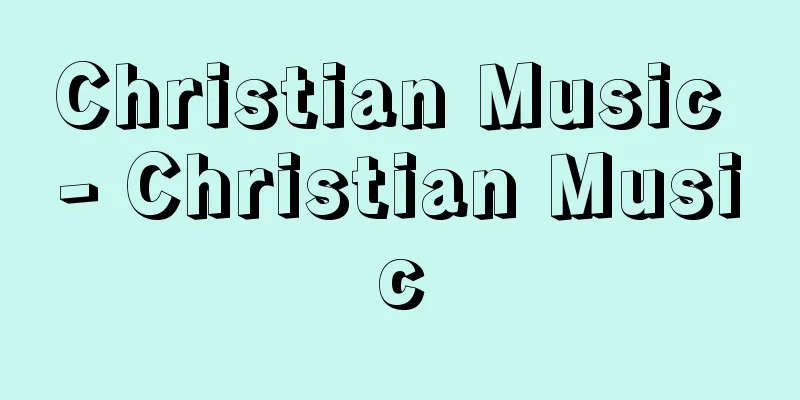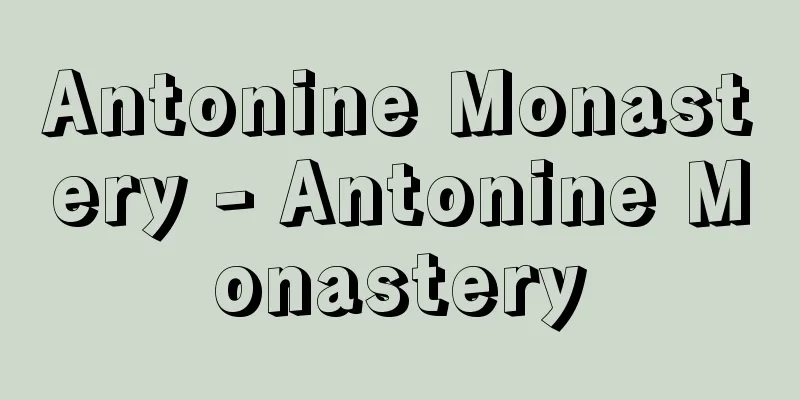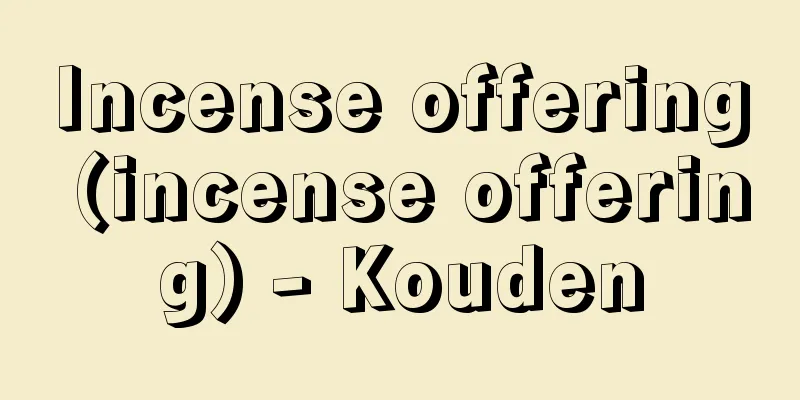Christian Music - Christian Music

|
The connection between music and religion is so close that it is even considered a question of the origins of music, and a particularly rich history of music has developed in its relationship with Christianity. One of the reasons for this is the Christian view of music, which considers music to be an inseparable element of the liturgy and plays an important role in the participation of the people. Christianity was born from Judaism, and it is natural that it inherited a lot of its liturgical music from Judaism. Therefore, the traditions of early Christian psalm-chanting and hymns, as well as the singing style, originated in Jewish rituals. Some of the characteristics of Jewish music were permanently retained in the nature of Christian hymns even after Christianity spread throughout Europe. However, liturgical music, which is deeply connected to practical actions, was determined by regional and cultural differences, as well as differences in doctrinal views, and showed a variety of external expressions. Thus, as Christianity branched out into various denominations over its long history, such as the Roman Catholic Church, the Eastern Orthodox Churches such as the Greek Orthodox Church and the Russian Orthodox Church, the Protestant denominations such as the Lutherans and Calvinists, and the Church of England, each denomination developed its own church music. Among these, the Roman Catholic Church and the Protestant Church have made greater contributions to the history of European music. First, in the Catholic Church, efforts were made to unify and establish the liturgy in Latin during the Middle Ages, as Rome established its leading position in both politics and culture. As a result, monophonic chants called Gregorian chant were compiled as official liturgical chant. Later, thanks to the support of the Frankish Kingdom and the development of musical notation, this Gregorian chant spread rapidly throughout Northern Europe. From the 9th century, Gregorian chant was arranged using early polyphonic techniques, and this attempt represented the first important step in distinguishing Western music from other music. As polyphonic techniques developed, excellent works were added to church music, but at the same time, the importance of secular music increased, and it was often difficult to distinguish between secular and religious works. Therefore, for a time, there was a movement to simplify and purify the music of the Catholic Church, and as a result, in the 16th century, vocal polyphony showed a model form of church music second only to Gregorian chant. In the Baroque period of the 17th century, traditional polyphony was still supported, but masses, motets, requiems, and other works in a new dramatic style were created. These musical genres have been followed by masterpieces throughout the Classical, Romantic, and Modern periods. A distinction was also made between liturgical music, which plays a functional role in the liturgy, and non-liturgical music, such as oratorios, which are based on religious themes but are not intended for liturgical use. In general, the creation of church music was sluggish from the Classical to Romantic periods. However, from the mid-19th century, the revival of church music spread worldwide, and the Second Vatican Council's resolution to renew the liturgy from 1962 to 1965 ushered in a new era for music in the Catholic Church. As mentioned above, the Catholic Church believes that people can only be saved through the church, and that they can receive God's grace through religious ceremonies performed by the clergy. On the other hand, in the case of Protestant churches, the liturgy was constructed based on the fundamental principles of the Reformation, which recognized the supreme authority of the Bible and that the salvation of believers comes from personal faith. In the Lutheran movement, simple hymns in the native language called chorales were created so that the word of God could be accepted by all people, including young people. During the Baroque period, many organ pieces, passion pieces, cantatas, and other works were composed using the melodies of these chorales. Calvinists were more thorough in their liturgical reform than Lutherans. The liturgy was simplified and, like Lutherans, the vernacular was used. They placed emphasis on the mystical power of music and only French verse translations of psalms were allowed in worship services. The Church of England (Anglican Church) has an eclectic character, combining Catholicism and Protestantism, both in doctrine and liturgy. At the beginning of the Reformation, artistic works such as anthems (choir songs with English lyrics taken from the Bible or other religious texts) were produced, and Anglican chants for singing psalms and canticles (songs included in the Bible other than Psalms) became popular. In addition, the introduction of Calvinist verse translation of the psalms became the starting point for the creation of Anglo-American hymns. [Jiro Isobe] Source: Shogakukan Encyclopedia Nipponica About Encyclopedia Nipponica Information | Legend |
|
音楽と宗教とのつながりは音楽の起源論の問題とされるほど密接であるが、とくにキリスト教との関係のなかでは注目すべき豊かな音楽の歴史が展開した。その原因の一つには、音楽は典礼を構成する不可分な要素であるとともに、民衆の参加に対し重要な役割を果たすとする、キリスト教の音楽観があげられるであろう。 キリスト教がユダヤ教を母体として誕生したことはいうまでもないが、典礼に用いられる音楽も、当然ながら、そこから多くの遺産を受け継いだ。したがって、初期キリスト教の詩篇(しへん)唱や賛歌などの伝統や、その歌唱様式もユダヤ教の儀式のなかに起源している。ユダヤ教のそれらの音楽がもっていた特徴のいくつかは、キリスト教がヨーロッパの全域に弘布(こうふ)されたのちも、キリスト教聖歌の性格のなかに永久に残されることとなった。しかし一方では、実践的行為と深く結び付いた典礼音楽は、地域性や文化の違い、あるいは教義観の相違などによって規定され、外的には多様な表れ方をみせた。そこで、キリスト教がその長い歴史のなかで、ローマ・カトリック教会をはじめ、ギリシア正教会やロシア正教会などを代表とする東方諸正教会、ルター派やカルバン派をはじめとするプロテスタント諸教派、イングランド教会などの各派に枝分れしていくと、そこでは各派に独自の教会音楽がはぐくまれていくこととなった。そのなかで、ヨーロッパ音楽の歴史により大きな功績を残したのは、ローマ・カトリック教会とプロテスタント教会である。 まずカトリック教会においては、中世に、ローマの政治・文化両面にわたる指導的地位の確立に伴い、ラテン語による典礼の統一および制定の努力がなされる。そしてその結果、正式な典礼聖歌として、グレゴリオ聖歌とよばれる単旋律の聖歌が編集された。その後、フランク王国による支持や記譜法の発達のおかげで、このグレゴリオ聖歌は北ヨーロッパに急速に普及していった。そして9世紀以来、初期ポリフォニーの技法によってグレゴリオ聖歌が編曲されていくことになるが、この試みこそ、西洋音楽が他の音楽と異なる重大な第一歩を意味するものである。その後ポリフォニーの技法が発展するに伴い、教会音楽にも優れた作品が加えられていくが、同時に世俗音楽の重要性が増大し、世俗的作品と宗教的作品の区別は、しばしば困難にもなっていった。それゆえ一時、カトリック教会の音楽に単純化および純粋化の動きがおこり、その成果もあって、16世紀には声楽ポリフォニーによって、グレゴリオ聖歌に次ぐ模範的教会音楽の形が示された。17世紀のバロック時代は、依然として従来のポリフォニーが支持されるとともに、新しい劇的な様式によるミサやモテット、レクイエムなどが生まれる。これらの曲種には以後の古典派、ロマン派、現代を通じて、名作が残されている。また、典礼のなかで機能的な役割を果たす典礼音楽と、オラトリオなどのように、宗教的題材に基づきながらも典礼での使用が意図されていない、非典礼音楽の区別がなされていった。全般的に古典派からロマン派にかけての時代には、教会音楽の創作は低調であった。しかし19世紀中ごろからは、教会音楽の復興運動が全世界的に広まるとともに、1962~65年の第二バチカン公会議における典礼刷新の決議によって、カトリック教会の音楽は新たな時代を迎えることとなった。以上のように、カトリック教会においては、人は教会を通して初めて救われるとし、聖職者による宗教儀式を通して神の恵みにあずかることができると考えられている。 一方プロテスタント教会の場合、聖書に至上の権威が認められ、また信徒の救いは個人の信仰からくるとする、宗教改革の根本理念に基づいて典礼が構成された。 ルター派では、神のことばが青少年をはじめすべての人々に受け入れられるように、コラールとよばれる自国語による簡潔な賛美歌が創作された。バロック時代、このコラールの旋律を素材としてオルガン曲、受難曲、カンタータなどの作品が多数作曲されている。 カルバン派の場合は、典礼の革新運動はルター派以上に徹底していた。典礼は簡素な様式に改められ、ルター派同様自国語が使用された。音楽の神秘的な力を重視し、礼拝ではフランス語韻文訳詩篇歌の使用だけが許された。 イングランド教会(聖公会)は、教義のうえでも典礼のうえでも、カトリック教会とプロテスタント諸派の折衷主義的性格をもつ。改革当初はアンセム(聖書あるいは他の宗教的テキストからとった英語の歌詞による合唱曲)などに芸術的作品が生み出されるとともに、詩篇やカンティクム(詩篇以外の聖書に含まれている歌)を歌うためのアングリカン・チャントが盛んとなった。また、カルバン派の詩篇韻文訳の導入が、英米系賛美歌の創作への原点となった。 [磯部二郎] 出典 小学館 日本大百科全書(ニッポニカ)日本大百科全書(ニッポニカ)について 情報 | 凡例 |
<<: Institutio Christianae religionis (Latin)
>>: Christianity - Kirisutokyou (English spelling) Christianity
Recommend
Brotherhood - Kyoudaichigiri
…Bun means a provisionally determined status. It ...
Anadenanthera
...However, several plants are known from the Old...
Galdan Tsering - Galdan Tsering
…In 96, he suffered a decisive defeat at the hand...
Sá de Miranda, F.de (English spelling) SadeMirandaFde
…The representative writers of this period includ...
Sthenelos
… On the day that Zeus was to give birth to Alkmē...
Ashibe [town] - Ashibe
A former town in Iki District, Nagasaki Prefecture...
Ogaki Castle
Hirajiro was a flat castle located in Ogaki City, ...
ṭanbūr (English spelling) tanbur
…However, waterwheels continued to be used as a p...
Sten Gustavsson Sture
1440?-1503 Commander-in-chief of Sweden. In office...
Ophiopluteus - Ophiopluteus
…However, some starfishes nurse their young for a...
Crown (bottle) - Oukan
...However, the modern era can be considered to h...
autarkeia
…He wore no clothes, no shoes, slept in the stree...
Shadows at the bottom - Sokohi
A disease in which vision is impaired due to a dis...
Ikema - Ikema
A perennial vine in the Asclepiadaceae family (AP...
Diagonal method
It is a type of argumentative method of proof in w...









